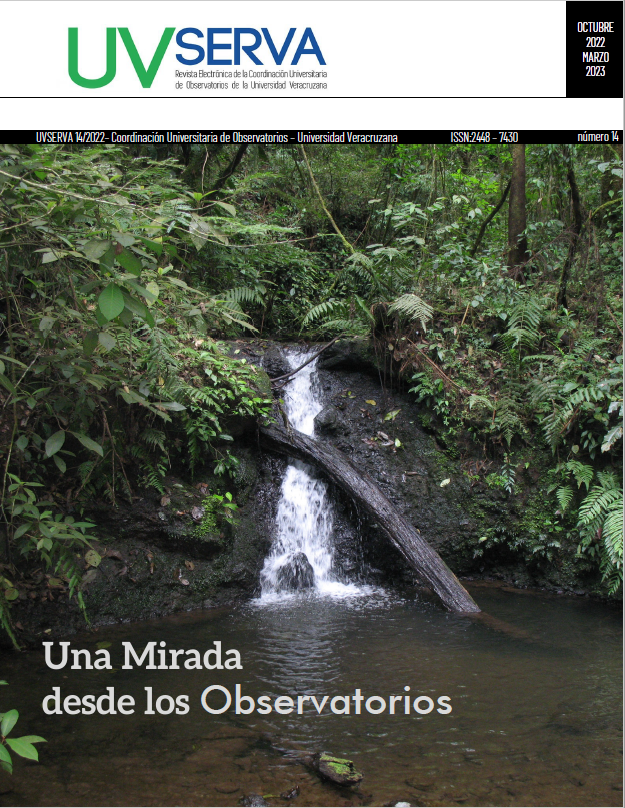Abstract
This article demonstrates an urban analysis of public spaces and green areas in the city of Córdoba Veracruz Mexico, with the purpose to identify the present indicators in clean and healthy spaces such as in Parks, green areas, fields and sports fields in relation to the number of its inhabitants and urban environment according to their location. Public open space is essential for the development of physical activities, its environmental and psychological effects on its inhabitants. The purpose of carrying out this research is to see the total number of green areas and public spaces accounted for so the city can determine the state in which these areas are and determine what to do with them, of course considering the parameters established by international organizations such as the WHO (World Health Organization) and the objectives of the UN 2030 Agenda (United Nations Organization). As a result of this investigation, the condition in which the public open spaces that exit in the city which were visited and inspected in a field check and with photos was determined by compiling data from indicators on: the deterioration, use and activities, their location, the condition of the furniture, the condition of the facilities, the level of users, in these areas , gardens, type of flora, fauna, recreational and sports areas, areas where children play, among others.
References
Borja, J. (1997). Conferencia ESAP "Ciudadanía y Espacio Público. Bogotá Colombia.
Borja, J. (2003). El espacio púlbico: ciudad y ciudadanía. Barcelona, España.: Editorial Electa.
Clare, C. M. (1998). People Places: Desing quidelines for urban open space. 2da Edition. New York: John Wiley & Sons.
Debnath, A. K. (2014). A methodological framework for benchmarking smart transport cities. Cities.
González-Kuk, G, M, R. A.-M.-A.-M. (2019). Áreas verdes urbanas en Córdoba, Veracruz, cantidad, ubicación y acceso: un análisis ortogonal. Revista Mexicana de Ciencias Agrícolas, 10(7), 1566.
Gómez, L. (2005). Las zonas verdes como factor de calidad de vida en las ciudades. Ciudad y territorio estudios territorriales, 417-436.
Goycoolea, R. P. (2003). Organización Social y Estructura Urbana en las ciudades ideales de Platón y Aristóteles. Departamento de Arquitectura, Universidad de Alcala.
Hernández, M. B. (2004). Transforming Public Spaces in Mexico: The Case of colonias populares in Xalapa, Thesis Doctoral. New Castle Upon Tyne: Faculty of Humanities and Social Sciences school of Architectura Planning ang Lanscape.
INEGI. (01 de OCTUBRE de 2022). INSTITUTO NACIONAL DE ESTADÍSTICA Y GEOGRAFÍA. https://cuentame.inegi.org.mx/monografias/informacion/ver/poblacion/
Jerold, K. S. (2000). Privately Owned Public Space - The New York City Experience. John Wiley & Sons.
Krier, R. (1981). El Espacio Urbano- Proyectos de Stuttgart. Barcelona: Gustavo Gili.
Latapi, J. (2015). Ciudades saludables en el contexto internacional. Obtenido de Libro en linea. CONACYT. Anmm.org.mx.Publicaciones. Recuperado el 5 de Mayo de 2016: http://www.anmm.org.mx/publicaciones/CAnivANM150/L26_ANM_Ciudades_saludables.pdf
Lynch, K. (1982). Planificación del sitio. Barcelona, España.: Gustavo Gili.
Lynch, K. (1985). La buena forma de la ciudad. Barcelona, España.: Gustavo Gili.
Meza, M., & Moncada, J. O. (2010). Las areas verdes de la ciudad de Méxcio. Un reto actual. Revista electronica de geografía y ciencias sociales, 1-10.
Muñoz-Márquez, R., & Corredor, T. A. (2020). Dotación, distribución y accesibilidad de áreas verdes urbanas. Estudio exploratorio en Córdoba, Veracruz, México. ESPACIOS VERDES PÚBLICOS: Estudios culturales, sociales y ambientales. Laboratorio de Áreas Verdes y Espacios Públicos. México: Facultad de Arquitectura, Universidad Nacional Autónoma de México.
Palacios Reyes, I. E. (2017). Establecimiento de criterios para diseñar un jardín sensorial terapéutico. Tesina de postgrado de Arquitectura de Paisaje. . Córdoba Ver. México: Tesina de postgrado de Arquitectura de Paisaje perteneciente a COLPOS Colegio de Posgraduados campus Córdoba, Veracruz.
Pérez-Medina, S. (2015). Áreas verdes y arbolado en Mérida, Yucatán. Hacia una sostenibilidad urbana. Econ. Soc. Territ., 1-33.
Quatratin, M. (15 de Diciembre de 2014). Quatratin Mexico.
https://mexico.quadratin.com.mx/Recomienda-OMS-16-m2-de-areas-verdes-por-habitante-DF-tiene-5-3m2/
Rendón, R. (2010). Espacios Verdes públicos y calidad de vida. Ciudades Verdes Mexicali, 1-14.
Schjethan, M. e. (2004). Principios de diseño urbano ambiental. México: Pax.
SEDESOL. (s.f.). Sistema Normativo de Equipamiento Urbano: Recreativo. México: Secretaría de Desarrollo Social.
Vélez, R. L. (2009). Del parque urbano al parque sostenible. Bases conceptuales y analíticas para la evaluación de la sustentabilidad de parques urbanos. Revista de Geografía Norte Grande.

This work is licensed under a Creative Commons Attribution-NonCommercial 4.0 International License.
Copyright (c) 2022 José René Morgado Bustos , Clara Yanet Conguillo Palomares , José Juan Ramírez Julián , Irma Elisa Palacios Reyes, Erika Benítez Malagón , Daniel Alejandro Gómez Escoto , Gerardo Ignacio Hernández García

